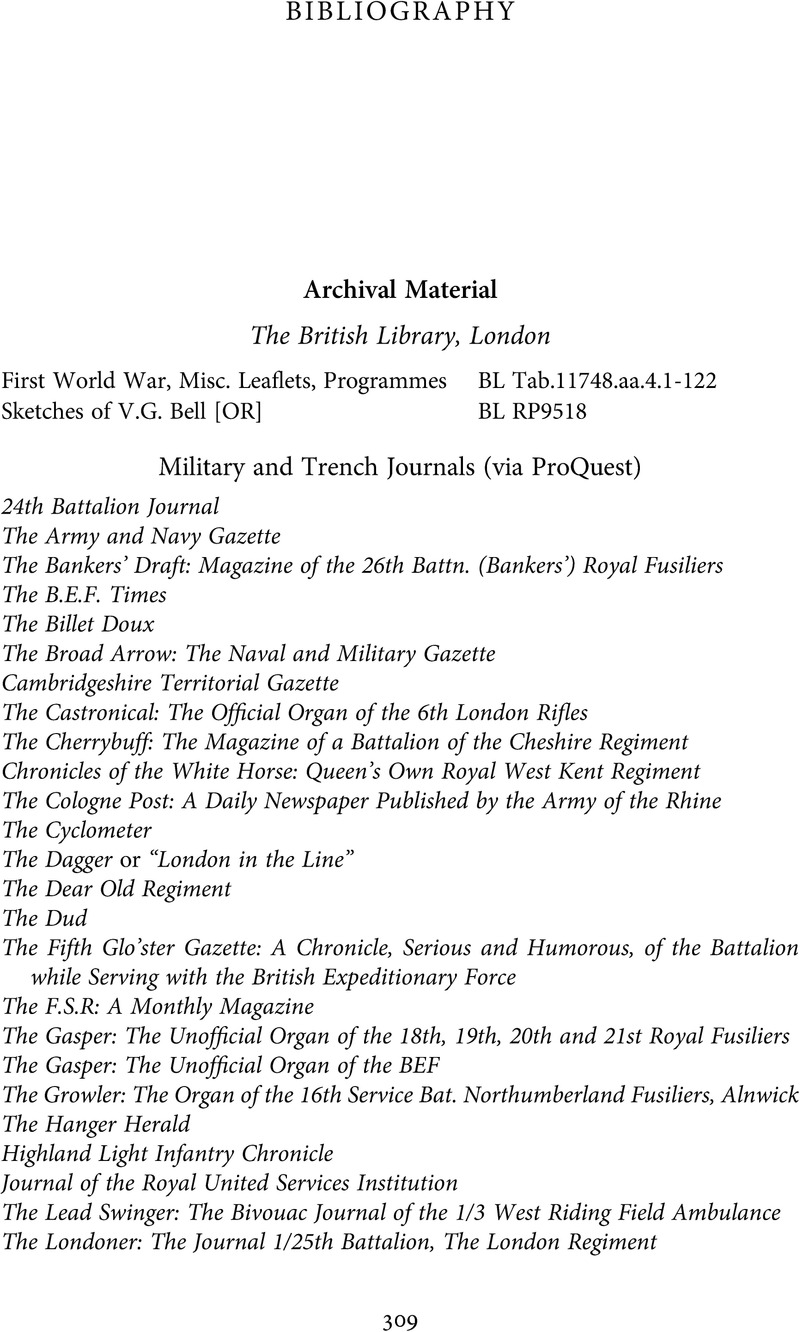Book contents
- Making Sense of the Great War
- Studies in the Social and Cultural History of Modern Warfare
- Making Sense of the Great War
- Copyright page
- Dedication
- Contents
- List of Figures
- List of Tables
- Acknowledgements
- Abbreviations
- Map of the Western Front
- Prologue
- Introduction
- Part I The Environment
- Part II Social Groups
- Part III Crisis and Morale
- Appendix Demographics of Six English Regiments in the BEF
- Bibliography
- Index
- References
Bibliography
Published online by Cambridge University Press: 11 April 2024
- Making Sense of the Great War
- Studies in the Social and Cultural History of Modern Warfare
- Making Sense of the Great War
- Copyright page
- Dedication
- Contents
- List of Figures
- List of Tables
- Acknowledgements
- Abbreviations
- Map of the Western Front
- Prologue
- Introduction
- Part I The Environment
- Part II Social Groups
- Part III Crisis and Morale
- Appendix Demographics of Six English Regiments in the BEF
- Bibliography
- Index
- References
Summary

- Type
- Chapter
- Information
- Making Sense of the Great WarCrisis, Englishness, and Morale on the Western Front, pp. 309 - 344Publisher: Cambridge University PressPrint publication year: 2024

